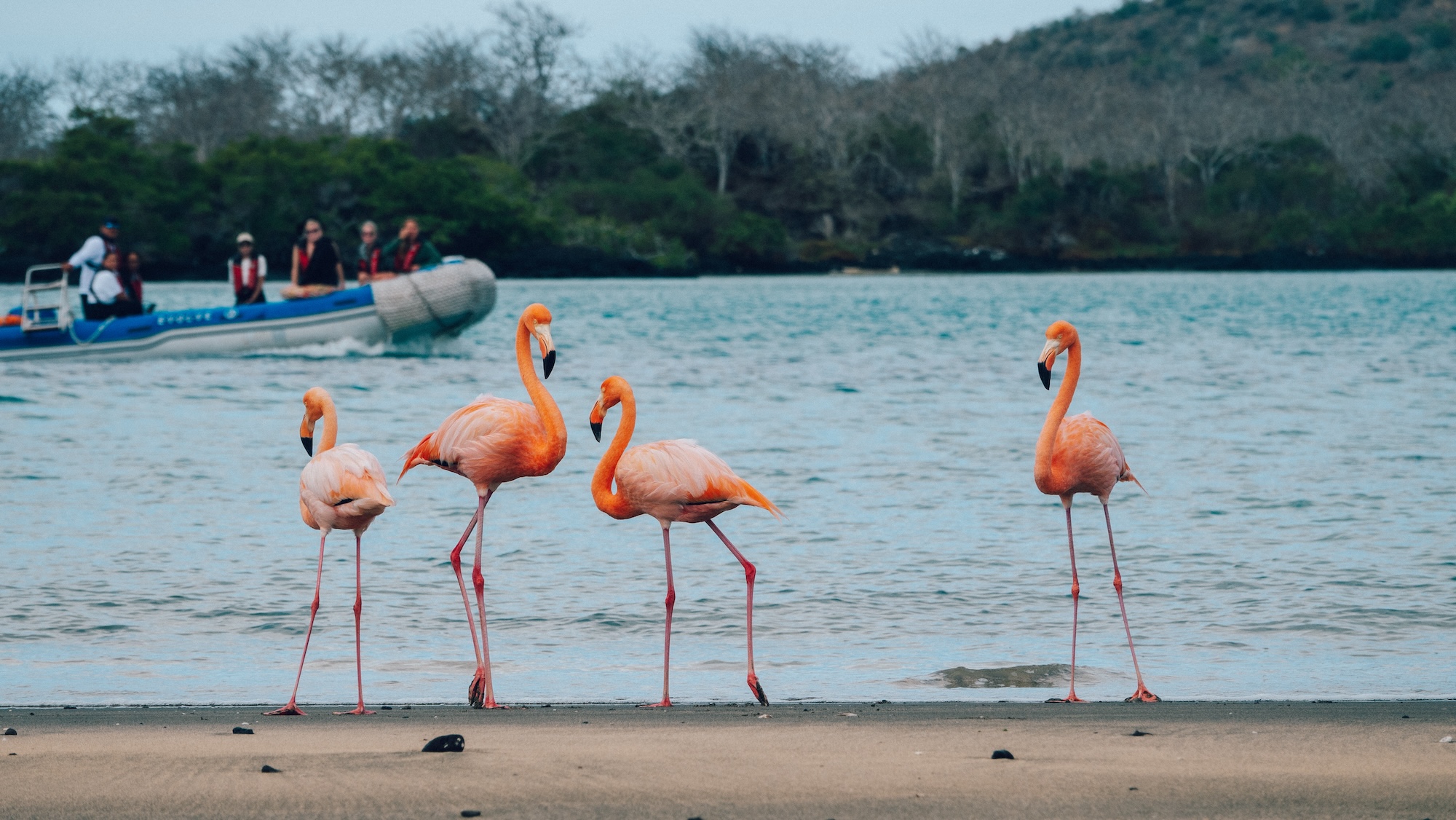16 Important Tips for Visiting the Galapagos Islands
Swimming with penguins and dolphins, playing with baby sea lions, and winning a (very easy) footrace with a giant tortoise are just a few of the many incredible moments I experienced on my recent trip to the Galapagos. The Galapagos is made up of 13 major islands (and tons of minor ones) in the Pacific Ocean 600 miles off the coast of Ecuador. Made famous by Charles Darwin, this area is now a national park. I spent a week exploring this incredibly unique archipelago and it was one of the most incredible trips of my life (seriously, it was right up there with Antarctica). This unique destination does come with its own set of unique needs when it comes to travel. Whether you’re just dreaming about a visit to the Galapagos or you’re jetting off next week, let me share my most important tips for visiting the Galapagos Islands.
This post may contain affiliate links, which means I’ll receive a commission if you purchase through my link, at no extra cost to you.
Choose the Right Trip for You
Price Differences
There are a lot of companies that host tours in the Galapagos, so it can be difficult to narrow down your choices. Price is understandably most people’s largest concern. The Galapagos is definitely a more expensive destination, but some tours are cheaper than others. Land-based tours (where you are staying in an accommodation on land) are often cheaper than live-aboard cruises, but you have to spend more time each day transiting from place to place (on cruises, most transiting is done at night). Whether you choose to stay on a ship or on land, length of trip and level of luxury will impact price as well.
Big vs. Small Ships
When it comes to cruises, your ship type will make a big difference in your overall experience. Larger ships rock less, so if you’re prone to sea sickness, this may be a better option for you. Medicine like ginger, scopolamine, and meclizine and sea sickness bands are also helpful if you have issues with the motion. Smaller ships provide more personalized attention and a smaller group environment with more frequent and longer excursions.
Scuba or Snorkel
If you’re a certified Scuba diver, you may want to look into diving tours. These allow you to see more animals up close, including hammerhead sharks! For those without certifications, snorkeling tours still provide plenty of interaction with wildlife.
My Trip
I joined TBA Escapes for their all-women group trip in June 2024. There were 14 of us on the trip and we were on a small luxury yacht operated by Ecoventura. This was a high-end trip with a high-end price tag, but it was the perfect experience for me, especially traveling solo. I cannot recommend TBA Escapes enough, but Ecoventura does also rent their boats out on a per-cabin basis that anyone can book. The luxury yacht experience, from the food to the staff, was just as much an incredible part of the trip as the wildlife and scenery.
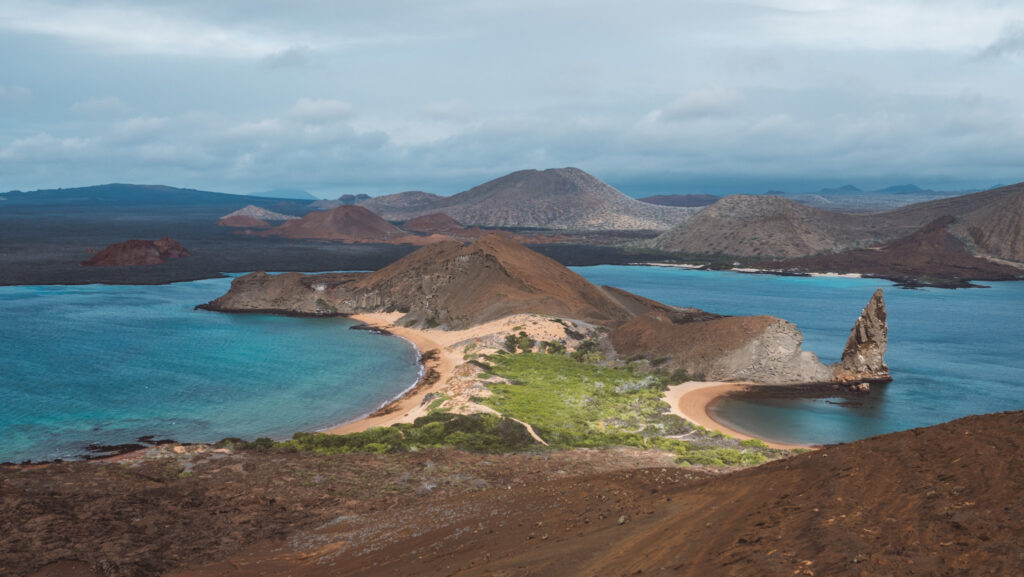
Be Prepared for a Special Bag Inspection in Quito
It can be a big confusing when you enter the Quito airport to take your flight to San Cristobal. Your carry-on bags need to be taken to a special bio scanner. After they pass through, they put a green zip tie around your zipper pulls so you can’t open it again until you get to the Galapagos. This is to ensure you’re not bringing anything banned materials. The Galapagos has been able to form into such a special place largely because of its isolation from the mainland, so we have to be careful of what we’re taking with us.
I wouldn’t worry too much about this scan. Everyone in our group got through without any issues. They also didn’t zip tie our backpacks so you can still access your items there.
Planes going from Quito to San Cristobal make a stop in Guayquil to let passengers on/off. They also use this time to spray the bags in the overhead bins to prevent any unwanted things from making their way to the Galápagos.
Also, there’s no limit to how much liquids you can bring on domestic flights within Ecuador. This means you can stock up on products for your trip in Quito if needed, which brings me to my next point…
UV is High – Cover Up & Wear Reef-Safe Sunscreen
Being right on the equator, the Galapagos receives a lot of sun. On my trip, the UV index routinely peaked around 11-13 each day. Be sure to cover up with hats, polarized sunglasses, and UPF clothing. On any exposed skin, it’s important to use reef-safe sunscreen to protect yourself and the sensitive environment. You’ll be spending a lot of time in the water, so be sure to reapply often.
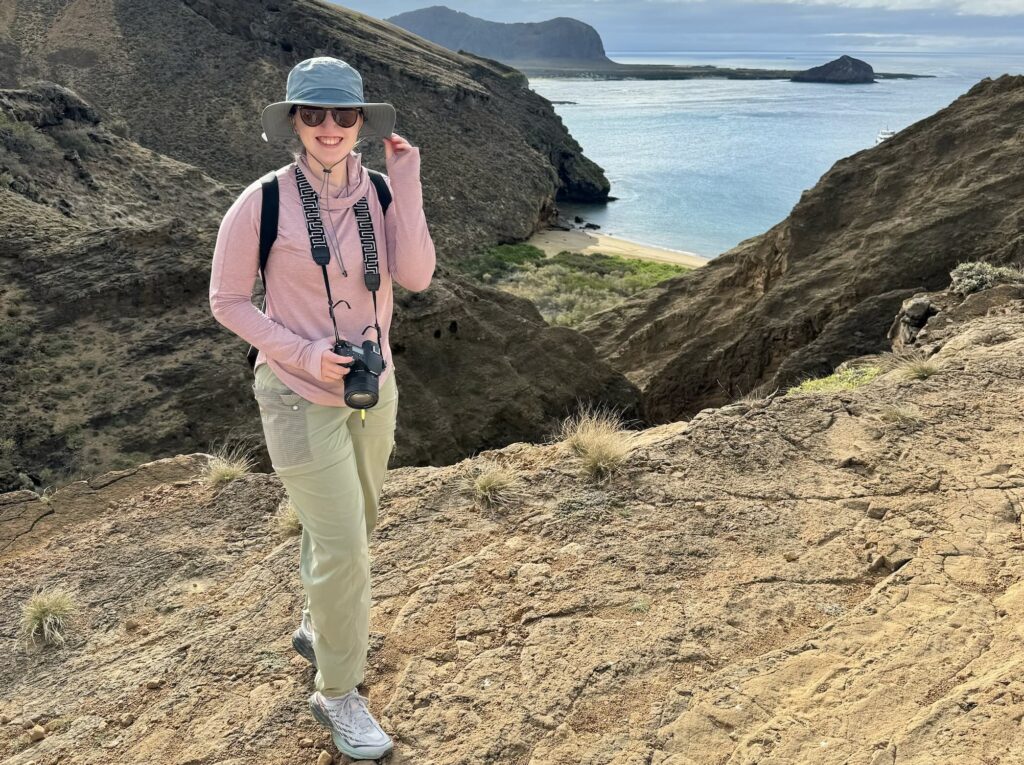
These are my favorite reef-safe sunscreens (and I’ve tried a lot of them):
- Thinksport Clear Mineral Face Sunscreen
- Blue Lizard Sensitive Mineral Sunscreen with UV Activated SmartCap
- Badger SPF 15 Lip Balm
Ecuador is One of the Easier Countries to Travel to as an American
While you should bring plenty of cash for your trip (not all places take cards), you don’t need to worry about converting cash. I don’t know about you but I have a drawer full of international bills and coins I couldn’t use up before I left. Thankfully, Ecuador uses the US Dollar as it’s official currency.
They also use standard American outlets and voltage for electricity (Type A&B, 120V). I had to do a double take on this, but you really can leave your converters and adapters at home.
One important and major difference between Ecuador and the US (outside of the official languages) is that the tap water in Ecuador is not safe to drink. Always be sure to drink bottled or filtered water. Whenever I travel to a country with unsafe water, I also am careful to always take a Travelan pill with every meal to help prevent traveler’s diarrhea.
Pack All Sorts of Medicine
I know I’ve already mentioned sea sickness medication and Travelan, but it’s important to pack a robust medicine bag with you. The Galapagos is very remote, so you can’t just run to CVS if you need anything. I packed everything from Imodium to Zofran to Zzzquil to Band-Aids just in case. If you’re on a group trip, people will likely be willing to share if you need something, but best to just be prepared.
You Can Get a Collectible Galápagos Passport Stamp, but it’s Risky
After you land in San Cristobal, you must see an agent to verify your entry. They take your passport and half your transit control card ($20 USD, the other half you give them when you leave) and make sure you’ve paid the Galapagos Entrance Fee ($100 USD). They also have a special Galapagos passport stamp you can ask for.
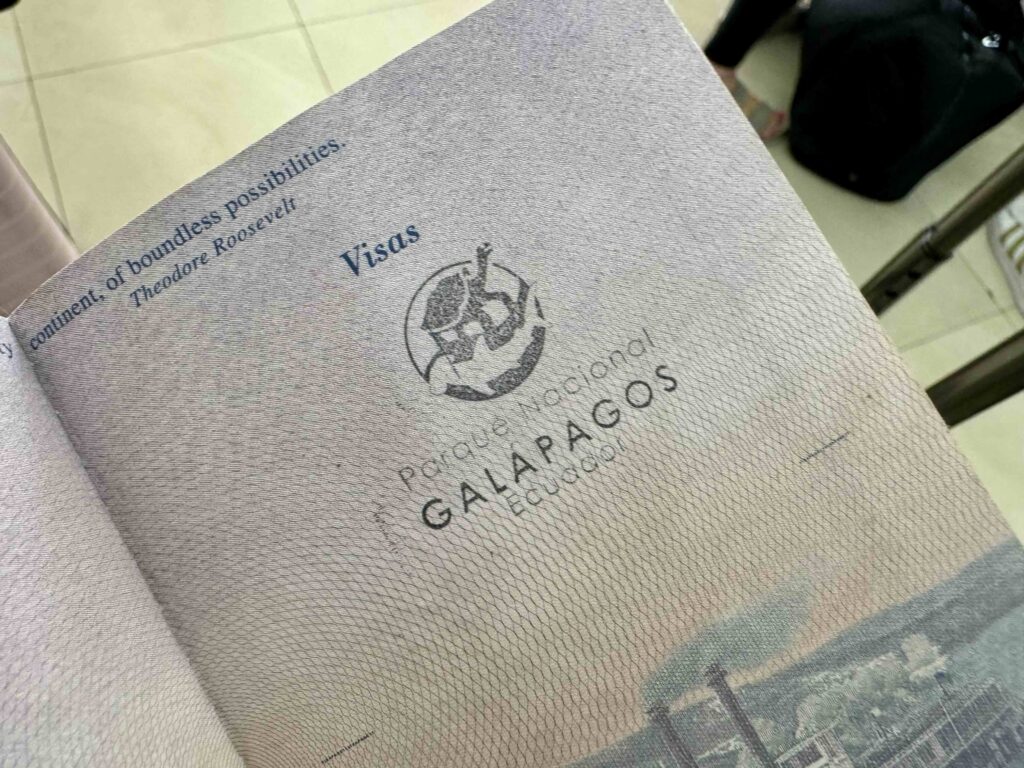
However, I’ll warn you there’s a risk with any of these “collectible” stamps. As they are unofficial, they can technically invalidate your passport. The chance of actually being stopped and denied entry into a country due to these stamps is low, but not zero. Personally, the risk of ruining a trip over a stamp is just not worth it to me, so I passed.
The Time of year will Impact Some Animals You’ll See
The Galapagos sits directly on the equator, so it doesn’t experience traditional spring, summer, fall and winter. Instead, it has a dry season (July-December) which tends to be colder and a rainy season (January-June) that’s a bit warmer. There’s really no wrong time to visit the Galapagos.
You may see different animals depending on when you go. For example, we were lucky enough to see dolphins and even swim with them in late June, but my sister didn’t see any dolphins on her trip in November. Dolphins and whales are more likely to be spotted around the middle of the year.
Even animals you can see year-round will look different. Mating season will bring out the brightest colors and nesting season will bring baby animals. If there’s a particular animal you’re most excited for, consider timing your trip around them.
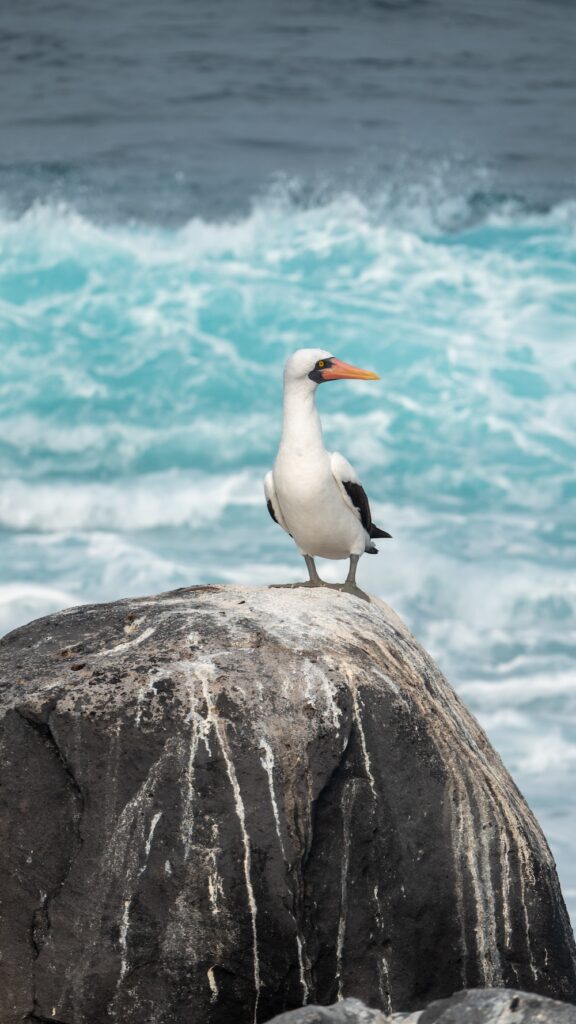
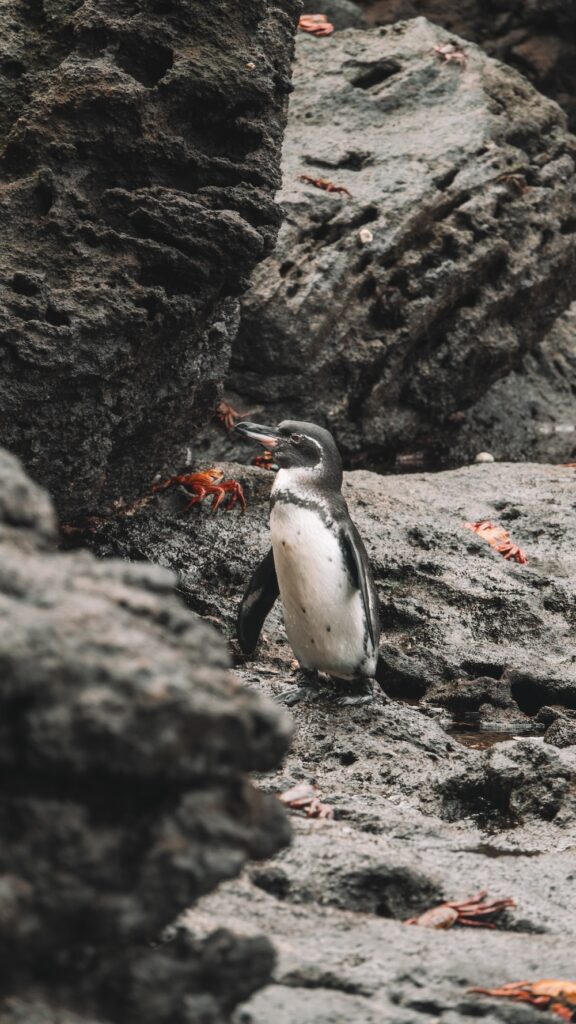
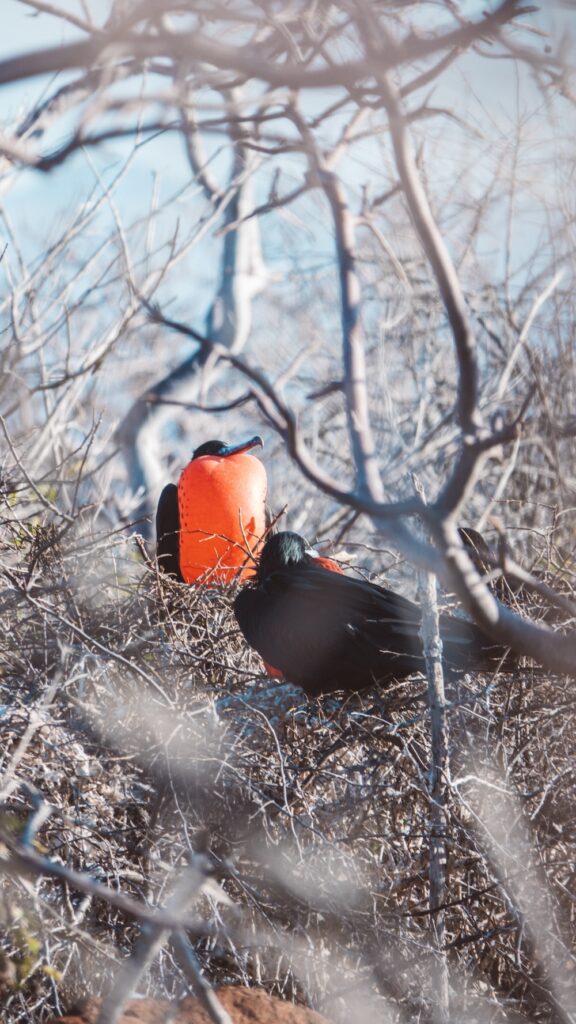
Wear a Wetsuit – The Water is Cold
The water temperature in the Galapagos can vary between 66- and 76-degrees Fahrenheit (19-24 Celsius). When I visited in late June/early July, it was right around 70 degrees. Some regions may feel colder depending on currents, water depth, etc. If you’re Scuba diving, you’ll likely encounter colder water as you descend.
I highly encourage you to wear a wetsuit when you’re in the water. Check with your tour company ahead of time to see if they provide these and bring your own if they don’t. EcoVentura provided us with 3mm full body wetsuits that were perfect. The wetsuit will help keep you warm and buoyant during long snorkeling sessions. Additionally, the wetsuit will help protect you from the small jellyfish in the water. It also helps keep you from getting startled by a sea lion whisker if they come too close.
Added bonus of wearing a wetsuit – you don’t need as much sunscreen!
Stay Up Late and Look for the Milky Way
On a clear night, go outside and look up. After your eyes adjust, you may be able to see Polaris (the North Star), the Southern Cross, and even the Milky Way. I’d never been to a place dark enough and far enough away from light pollution to view it before. It was a surreal experience that had me thinking about our place in the universe, especially while I was out in the middle of the open ocean far from home.

To capture photos of the Milky Way, you’ll want to use long exposure. This can be difficult on a rocking ship as you have to keep the camera as still as possible!
Invest in Some Camera Equipment
So much of a trip to the Galápagos centers around the wildlife, so you’ll want to pack some equipment to properly capture the memories. You don’t even have to be a skilled photographer to get amazing pictures. Every photo from this post was taken by me on one of the following:
- iPhone 15 Pro – used for close ups and to take long exposure pictures of the Milky Way
- Sony Cybershot RX10iv – I shot almost entirely in Auto
- GoPro Hero10 – primarily for videos on snorkeling excursions with floating hand grip
The Sony RX10iv is the most expensive camera on the list, but it has a zoom up to 600mm, which allowed me to capture great shots of animals from far away. I also used this pack of mobile Lightroom presets to edit all the photos.
For quick editing on the go, be sure to grab a SD card reader for your phone. With this, I was able to have photos edited and online only minutes after getting back on board.
Watch for Fire Ants When You go See the Giant Tortoises
Seeing the giant tortoises on Santa Cruz Island was one of the biggest highlights of the trip for me. My mind struggles to comprehend how some of these tortoises are over 150 years old! And yes, they do move as comically slow as you’d think.
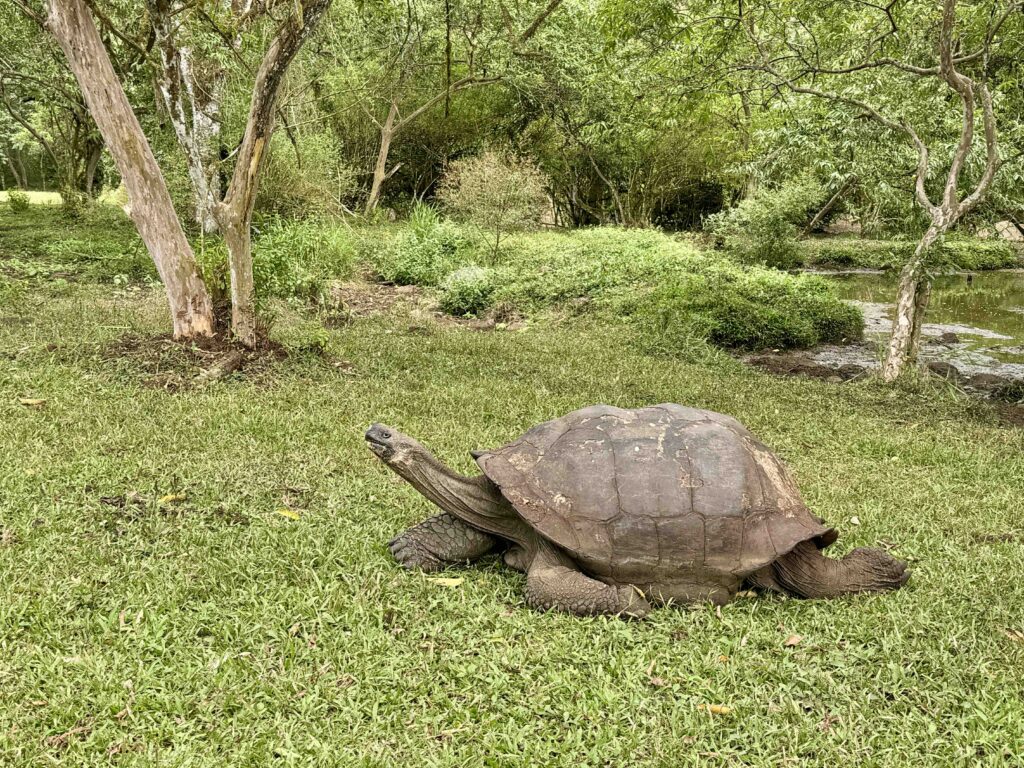
One thing to beware of is that the highlands of Santa Cruz are home to fire ants. The visitor center provided us with rubber rain boots to change into to prevent the fire ants from climbing into our clothes and biting us. However, you’ll also need to remember not to sit down – a few of the women on our trip got bites from sitting down for a photo op.
Avoid Wearing Bright Colors on Floreana Island
The island of Floreana is home to a Carpenter Bee that is attracted to bright colors. Thus, you’ll want to be sure to wear a neutral outfit the day you visit this island. The bee is more of an issue during the rainy season. I visited in the dry season and didn’t see any, but I wore neutrals just in case.
✈️ Want to fly to Ecuador for free? Redeeming points for free flights and hotels is easier than ever with Daily Drop Pro, your one-stop-shop for all things miles & points. Click here to sign up for this game changing app and receive exclusive bonus content from me.
I also love Daily Drop Pro’s cash flight deal alerts, card wallet for organization, and community feature where you can ask questions and share your travel wins!
There are No Bathrooms During Excursions
You’ll want to plan you water (and coffee) intake around your excursions, because bathrooms are usually not an option. The islands are remote and undeveloped. These are protected lands, so using the bathroom in the bushes is prohibited. For snorkeling excursions, peeing in your wetsuit is technically an option, but you do have to put it on again day after day, so I wouldn’t advise this. Our excursions were only a couple of hours each, so this was never a huge issue for anyone in my group, but we were all chronically a bit dehydrated to be on the safe side. We all supplemented the lack of water with hydration packets.

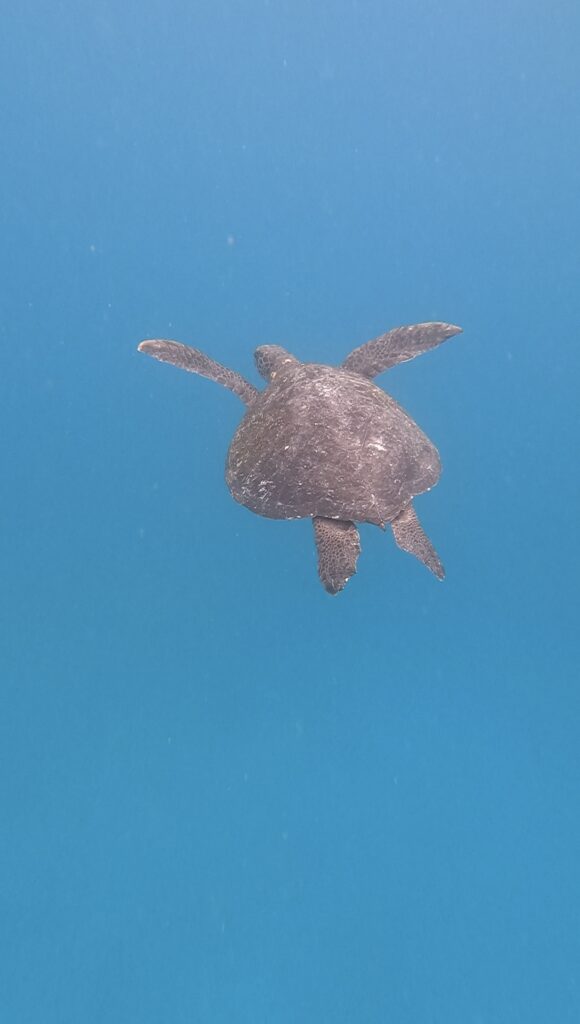
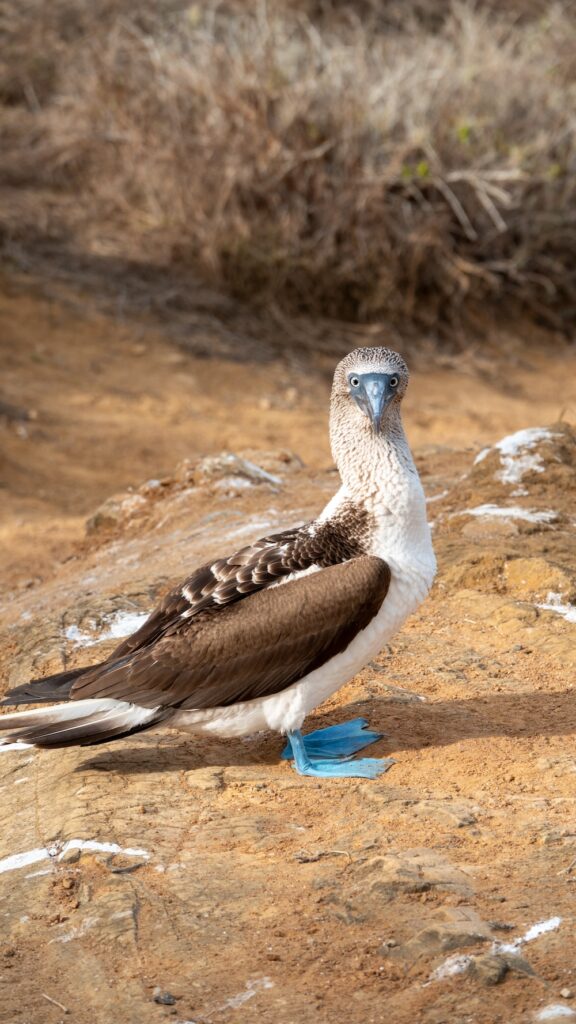
Watch Out for Male Sea Lions
While you should always aim to keep 6 feet away from the wildlife, give extra space to male sea lions. These “beach masters” are bigger than the rest and will be aggressive if they feel they need to protect the other sea lions. They can move quicker than you think and may even bite.
We never had an issue with a male sea lion while in the water, but on land we gave him a wide berth.
Leave No Trace
You should follow Leave No Trace hiking practices whenever you’re on an excursion in the Galápagos. This primarily means staying on the marked trails, packing out what you packed in, and not taking anything from the islands. In the Galápagos, you shouldn’t bring any food onto the islands at all (water is fine). Eat before you leave (and the excursions aren’t that long). Also be sure to keep a safe distance from wildlife.
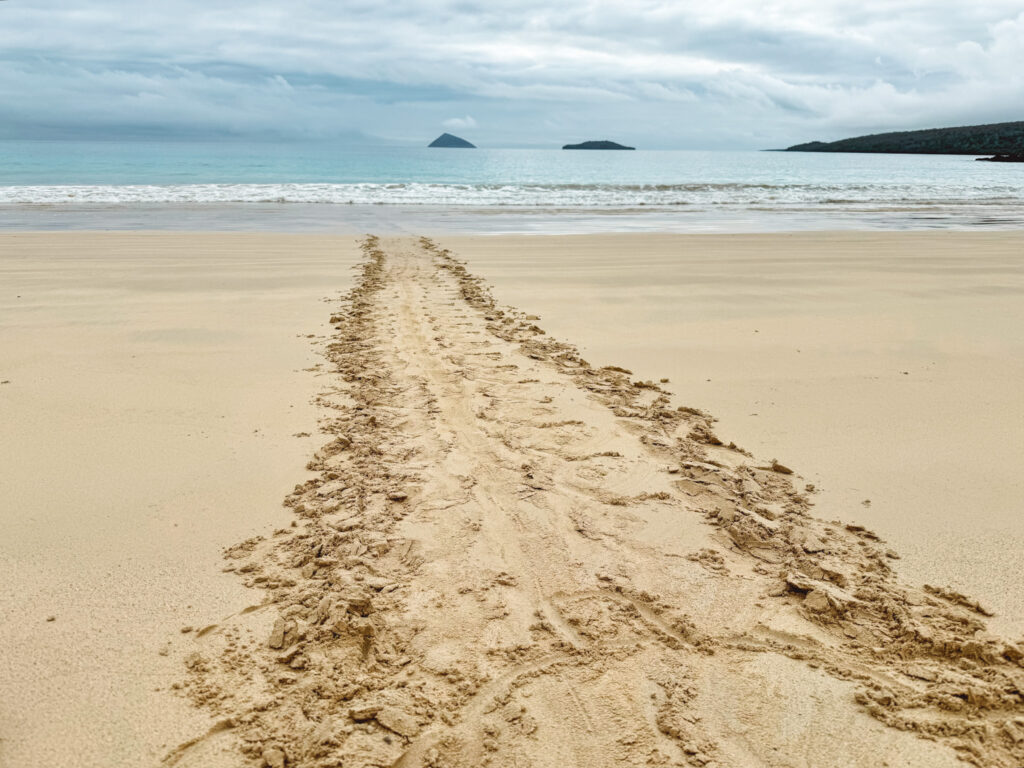
One extra precaution is to beware of the wind. The last 2 days of my trip were super windy and it was easy for a hat to blow away or for something to fly overboard. Be sure to keep a hand on any lightweight belongings!
Buy a Deep Conditioning Treatment to Use After Your Trip
On my trip, we were snorkeling 1-2x/day and my hair definitely paid the price. Despite using the ship’s conditioner and Sea to Summit’s Reef Safe Leave In Conditioner, my hair still felt gross and damaged from all the salt water. It was hard to even run my hairbrush through it! Save yourself a trip to the store when you get home and stock up on a deep conditioning treatment before you leave. I used the Olaplex No 8 Intense Moisture Mask when I returned and it fixed all my hair issues immediately.
Final Thoughts
I can’t help but smile whenever I think back to my trip to the Galapagos. It’s such a special and diverse place. One day you’re on a volcanic island that looks like the moon, the next you’re in a jungle. Animals you’ve only seen in videos or at zoos are thriving in their natural habitat around you. Visiting the Galapagos admittedly takes more preparation and caution than many other places. However, following these tips for visiting the Galapagos will allow your trip to go smoothly and protect the beautiful landscapes and creatures for generations of visitors to come.
Don’t forget to pin this post for future planning!

You may also like:

